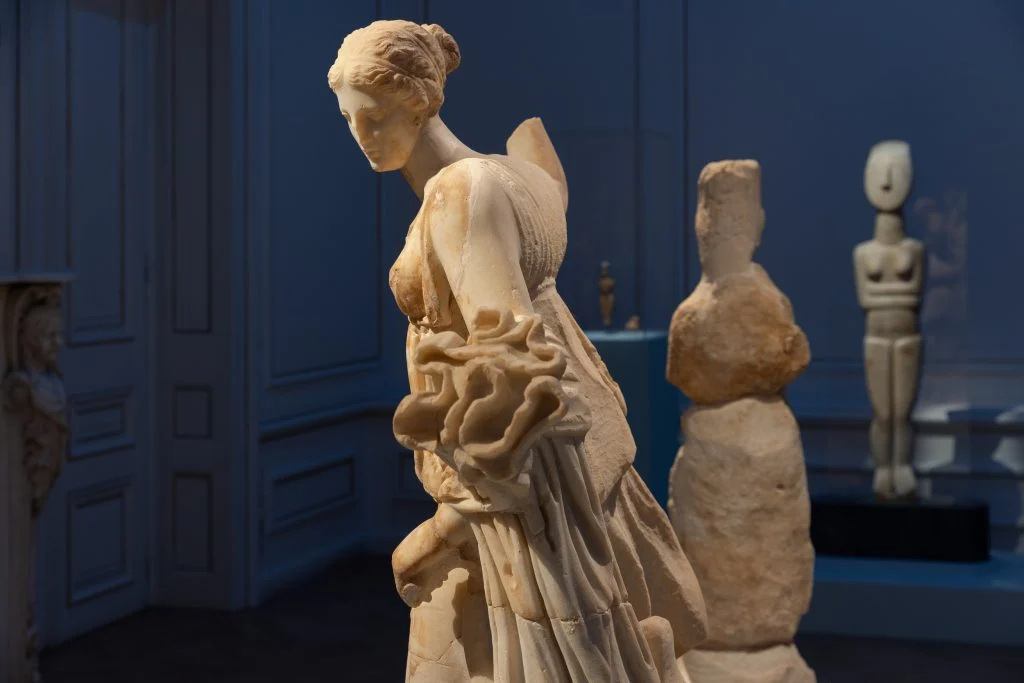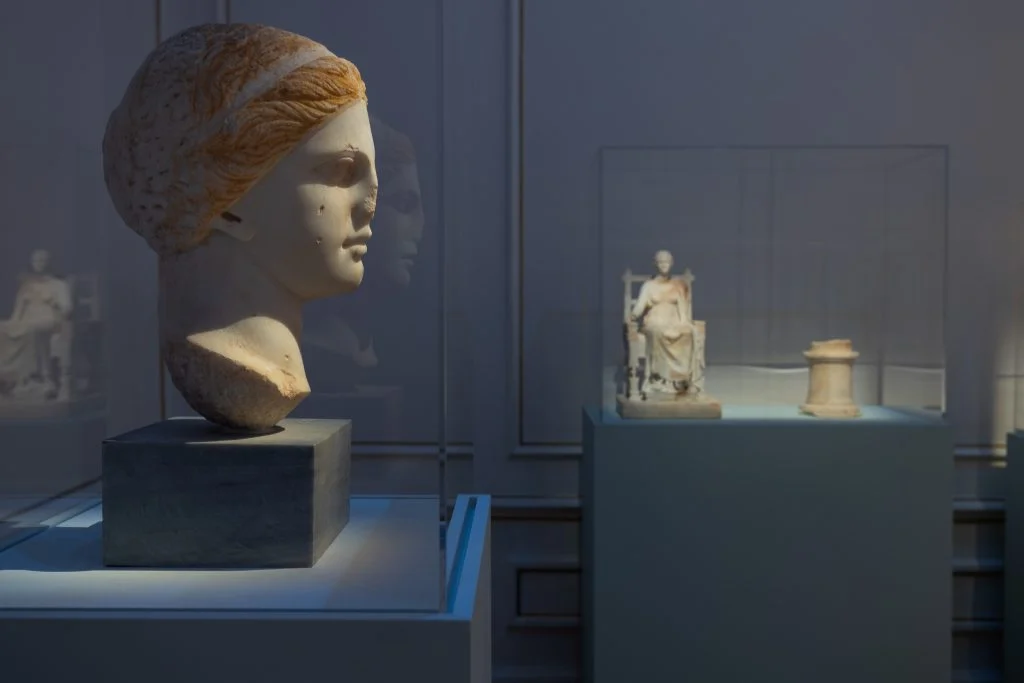 Installation view statues of Delos-born goddess Artemis in "Kykladitisses: Untold Stories of Women in the Cyclades" at the Museum of Cycladic Art until May 4. Photo: Paris Tavitian, © Museum of Cycladic Art.
Installation view statues of Delos-born goddess Artemis in "Kykladitisses: Untold Stories of Women in the Cyclades" at the Museum of Cycladic Art until May 4. Photo: Paris Tavitian, © Museum of Cycladic Art.
The Venus de Milo, a celebrated ancient statue found on the Greek island of Milos and displayed at the Louvre since 1821, is one of the most famous artworks in the world. Yet relatively little is known about the many centuries of artistic output on Milos and its surrounding islands, known as the Cyclades. In bringing to light this veritable treasure trove of antiquities and artifacts, the Museum of Cycladic Art in Athens is also spearheading new research into the rich historical insights these objects have to offer.
 Installation view statues of Delos-born goddess Artemis in "Kykladitisses: Untold Stories of Women in the Cyclades" at the Museum of Cycladic Art until May 4. Photo: Paris Tavitian, © Museum of Cycladic Art.
Installation view statues of Delos-born goddess Artemis in "Kykladitisses: Untold Stories of Women in the Cyclades" at the Museum of Cycladic Art until May 4. Photo: Paris Tavitian, © Museum of Cycladic Art.
This is certainly the case of a new exhibition "Kyladitisses: Untold Stories of Women in the Cyclades," currently on view until May 4, which uses art as a lens through which to learn more about the lives of the women who, over many generations, inhabited the sunny Cyclades, an archipelago of hundreds of islands including Mykonos, Thera (Santorini), and Ios. Some 180 statues and figurines dating from prehistory to the middle ages represent women in many guises, from goddesses, religious icons, mothers, entrepreneurs, and sex workers, all bonded by their resilience within a deeply patriarchal society.
The exhibition is the first initiative to emerge from a landmark deal signed last year by the Museum of Cycladic Art and the Ephorate of Antiquities of Cyclades, a regional office of the Greek ministry of culture, with the aim of promoting Cycladic art at home and internationally.
Sandra Mariopoulou, museum's president and CEO, noted to local press that it is "the first pan-Cycladic show that has ever been set up: a historic exhibition, as it is the first time it collects so many outstanding works of the Cycladic Islands in one place."